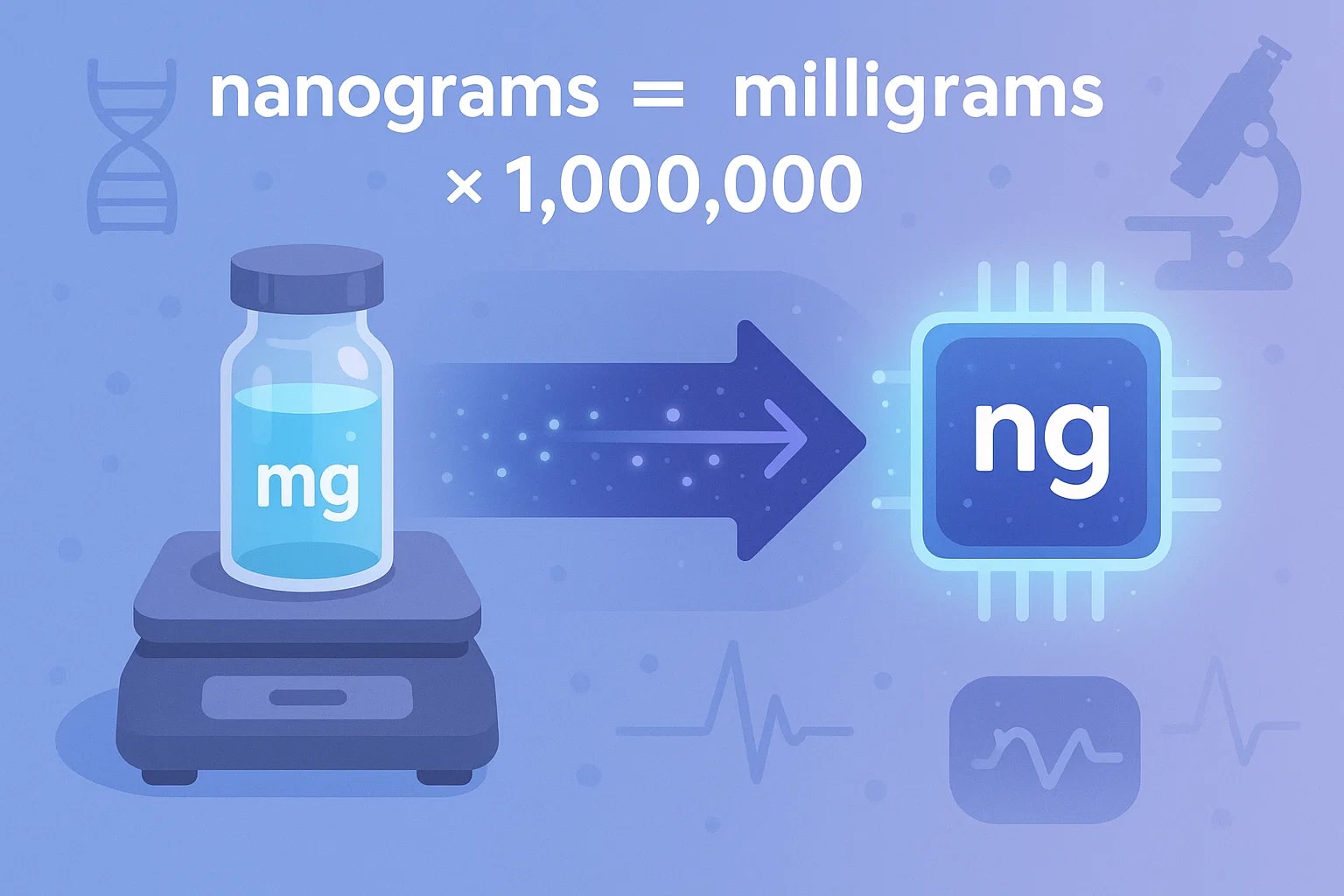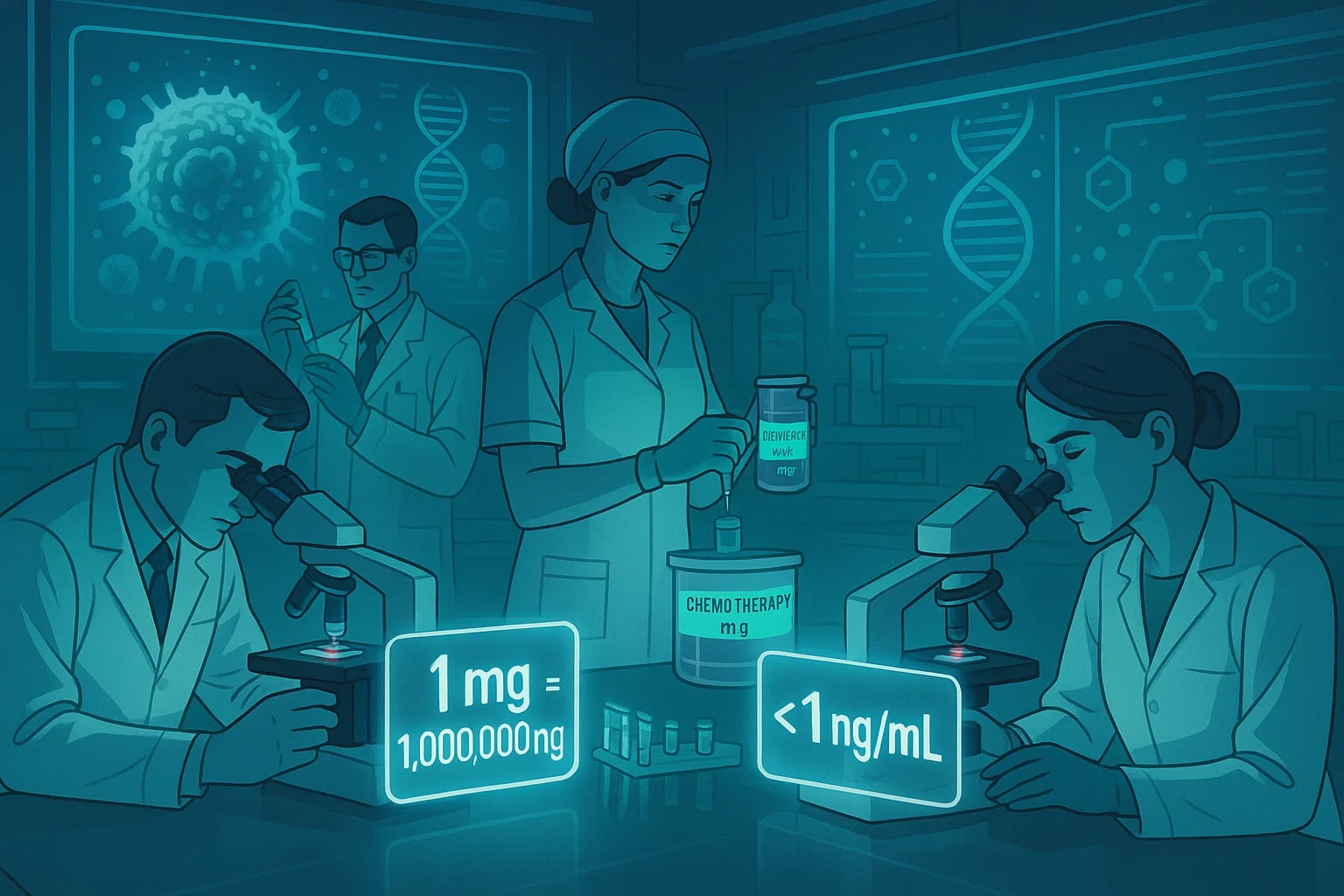milligram to nanogram – How to convert mg to ng
The leap from milligrams to nanograms shows how science scales from the small to the nearly invisible. A milligram (mg) equals 1 000 000 nanograms (ng). This conversion is crucial in advanced medicine, genetics, environmental research, and material science where ultra-small measurements make all the difference.
What is a milligram (mg)?
The milligram (mg) is a metric unit of mass equal to one-thousandth of a gram. The prefix “milli-” means one-thousandth, so 1 mg = 0.001 g. It is widely used in pharmaceuticals, nutrition, and chemistry, where accuracy in the smallest amounts can determine success or failure.
For perspective, a typical tablet of ibuprofen contains about 200 mg of active ingredient.
What is a nanogram (ng)?
A nanogram (ng) is a metric unit of mass equal to one-billionth of a gram. The prefix “nano-” means one-billionth, so 1 ng = 0.000000001 g. Nanograms are commonly used in biotechnology, toxicology, and forensic science to measure substances at the molecular or atomic scale.
For example, just 1 ng of DNA holds hundreds of millions of base pairs — enough information to profile a person’s entire genome.
Conversion Formula
To convert milligrams to nanograms, multiply by 1 000 000:
1 mg = 1 000 000 ng
For example:
0.25 mg × 1 000 000 = 250 000 ng

For precise and quick results, try our Weight Converter or explore the complete range of Conversion Tools to navigate measurements across all scales.
Do you know?
-
In clinical toxicology, certain poisons such as botulinum toxin are lethal at doses of just a few nanograms per kilogram of body weight.
-
Modern drug testing for athletes can detect banned substances at concentrations under 50 ng in a urine sample — the equivalent of a dust particle compared to a mountain.
-
In astrophysics, dust from comets and asteroids brought back by space probes is often analyzed in nanogram quantities to avoid destroying the entire sample.
-
Genetic labs use nanograms of DNA for sequencing — just 10 ng can be enough to read the blueprint of life.
The Nanogram Revolution in Cancer Research
In oncology, the shift from milligram-scale to nanogram-scale analysis has transformed treatment. Early chemotherapy drugs were administered in milligram doses, carefully measured for each patient’s body weight. But modern targeted therapies and diagnostic tests now often work in the nanogram range.
For example, immunoassays used to detect cancer biomarkers in blood can identify proteins at concentrations of less than 1 ng/mL. These ultra-sensitive tests allow doctors to detect cancer at earlier stages, long before symptoms appear.
This evolution — from measuring drugs in milligrams to detecting disease markers in nanograms — represents a revolution in precision medicine. The milligram is still vital for dosing, but the nanogram has become the key to early detection, making the conversion between them essential for bridging research and treatment.

From Millis to Nanos
Every 1 mg equals 1 000 000 ng — a reminder that science often deals with both the visible and the invisible. This simple conversion connects everyday medicine with frontier research, from tablets in your hand to molecular-level discoveries in the lab.

